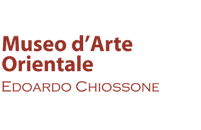
Click here to view image
Japan, Nara period, end of the 17th century / beginning of the 18th century
Statuette
Full fused bronze covered in foiled gold hammered and levigated. Height 35,6 cm x ø base 11,4.
Kannon personifies compassion and it’s one of the most important deities of Buddhism. The origin of this bodhisattva is not clear but the majority of the scholars seems to agree on locating its roots in India around the 1st / 2nd century a.d.
In Japan the veneration of Kannon started around the end of the 6th century when Buddhism reached Japan from way of China and Korea. The Sino-Japanese term “Kannon” means “watchful listening” and it’s often translated as “one who sees / hear all”. This is indeed the task of the compassionate Kannon who listens to the prayers of the people in difficulty. Another name for Kannon is Kanzeon which means “the one who constantly surveys”.




